Chinese art from a German family collection offered at Bonhams Cornette Saint Cyr
Lot 187. A rare large gilt-bronze figure of Shancai Songzi, Ming dynasty; 48.5cm high. Estimate: €30,000 – €50,000. Sold for €127,400. Photo: Bonhams.
PARIS.- Bonhams Cornette Saint Cyr announces the auction of Chinese Art from a German Family Collection in Paris on 26 October 2023.
Formed over many decades, this formidable collection estimated at more than €2.5 million covers a wide range of works of art from the early dynastic periods to the 20th century. The collection has a strong focus on Buddhist sculpture, as well as early ceramics and imperial porcelains, jades and cloisonné enamels, scholarly objects, furniture, and classical and modern paintings, reflecting the broad interests of the collectors whose curiosity extended well beyond the arts of China.
Asaph Hyman, Global Head, Chinese Ceramics & Works of Art, comments, “It is a great pleasure to offer this collection, formed over many years, building on the success of the Rousset Collection sale last year and the first Chinese Art sale held in Paris last June. We very much look forward to welcoming once again worldwide collectors to our rooms at Avenue Hoche, and indeed to the sales in London the following week.”
Caroline Schulten, European specialist, Chinese Ceramics & Works of Art, adds, “Each object has a story to tell and many pieces in the collection originally came from German collections formed in the early 20th century, quite a few of them published and exhibited.”
The sale is led by an exquisite group of Buddhist sculptures which include a rare limestone bodhisattva head dating to the Liao/Jin dynasty (estimate: €15,000 – 25,000), as well as several large Ming dynasty gilt-bronze sculptures, including a wonderfully expressive and large gilt-bronze figure of Shancai Tongzi (Sudhana) (estimate: €30,000-50,000) and a rare large gilt-bronze figure of Songzi Guanyin from Kangxi period (estimate: €15,000 - €20,000).
Lot 227. A rare large limestone head of a crowned bodhisattva, Liao-Jin dynasty (907-1234); 47cm high. Estimate: €15,000 – €25,000. Sold for €23,040. Photo Bonhams.
The rounded face finely carved with downcast eyes below heavy lids, with gently curved brows flanking the broad nose, small bud mouth and double chin, the protruding urna below elaborately shaped symmetrical curls with a central parting at the hairline, secured by a high triple-leafed diadem with cloud collar panels carved with a single lantsa-character set within a flaming Buddhist jewel supported by a lotus against flowerheads and scrolls, the beaded edge set with detached leaf terminals, traces of red pigment, stand.
Provenance: Sotheby's London, 30 October 1987, lot 244
Private collection, Vienna.
Note: A related head with double-tiered crown featuring a lantsa character is in the collection of the Minneapolis Institute of Art, and Robert Jacobsen notes that the use of Tibetan characters was favored by the Khitan Liao, Nurchen Jin, and Mongol Yuan rulers, see Robert Jacobsen, Appreciating China: Gifts from Ruth and Bruce Dayton, Minneapolis, 2002, no.31. Compare also a limestone head of Avalokiteshvara that shows a similar treatment of the facial features, tresses and crown, sold in Sotheby's New York, 16 September 2015, lot 428, and another head wearing a similar diadem centered by an om character, sold in Sotheby's London, 30th October 1987, lot 244. More recently, another closely related limestone head of a bodhisattva was sold in Christie's New York, 25 March 2022, lot 765.
Stylistically the features and headdress of the present figure also relate to painted clay sculptures made under the Liao dynasty in Lower Huayansi in Datong, Shanxi province, dated in accordance with 1038, compare Complete Series on Chinese Art. Sculpture: Five Dynasties and Song Sculpture, Beijing, vol. 5, 1988, pls 138-41. The present figure is almost certainly from the same context as two two similarly large limestone heads of bodhisattvas, that were both sold in Dr. Ernst Hauswedell, Hamburg, the first on 16 June 1955, lot 288, the second 15 November 1958, lot 28.
Lot 187. A rare large gilt-bronze figure of Shancai Songzi, Ming dynasty (1368-1644); 48.5cm high. Estimate: €30,000 – €50,000. Sold for €127,400. Photo: Bonhams.
Modelled as a young boy leaning forward with his head slightly turned upwards, holding his hands in adoration in front of his chest, palms together in the gesture of a firm and sincere heart, with precious bangles adorning his upper arms, wrist and ankles, wearing a short cape over a long robe, and aprons secured around his chest with a belt, long sashes enveloping his arms and body, the hems finely incised with scrolling lotus, clouds and geometric patterns, smiling, his face with a joyful expression, three tufts of hair rising from his head and a single earring hanging from his left ear.
Provenance: Collection of Wilhelm Sacklowski, Berlin, acquired in Beijing between 1922 and 1932, thence by descent in the family, acquired in 1993 from the family.
Note: This charming figure of Sudhana, known as Shancai in Chinese, a young Indian boy who went on a pilgrimage seeking enlightenment and studying under 53 masters, was associated with the image of Guanyin from the mid-Ming dynasty. In visual representations of the Guanyin, the figure of Sudhana would appear next to the figure of Longnu, the Dragon King's daughter. These two youths are considered Guanyin's acolytes, and while there is no scriptural basis for this grouping, the two figures often appear together, Sudhana standing to the right of Guanyin, and the figure of Longnu on the left. See a related gilt-bronze example of Sudhana, published in Selected Gems of Cultural Relics - Newly Collected in the Palace Museum in the last Fifty Years, Beijing, 2005, pp.130-131, no.168. Compare with a larger gilt-bronze figure of Sudhana, dated to the 17th century, sold in Sotheby's Paris, 10 June 2015, lot 204.
Lot 188. A rare large gilt-bronze figure of Songzi Guanyin, Kangxi period (1662-1722); 36.6cm high (without stand). (2). Estimate: €15,000 - €20,000. Sold for €38,400. Photo Bonhams.
Standing on a lotus base, slightly turned to the left, wearing a fine robe and shawls draped over her shoulders and arms, carrying a small infant with her right arm, her head turned down and looking at a small boy at her side holding on to her left hand, her face with a gentle expression, her heard neatly coiffed and covered with a long cowl sheltering the Amitabha crown, wood stand.
Provenance: Collection of Eugen Turi (1920-2016), Munich, acquired in Munich in the 1950s or and 1960s (by repute)
Nagel, 9 December 2014, lot 831.
Note: Songzi Guanyin, the maternal, feminine emanation of the bodhisattva Avalokiteshvara, was portrayed with the youth Sudhana, after the Song dynasty. The portrayal of the deity continued in both male and female forms until the late Ming dynasty, when the feminine form became prevalent. Songzi Guanyin, Avalokiteshvara with a child, very likely first appeared around this time and it is possible that the 'Avalokiteshvara with a child' iconography was inspired by images of the Madonna and Child, introduced to China by Jesuit missionaries in around 1600. Ceramic groups of the Christian subject also appear in Kangxi period Dehua kiln production, supporting this hypothesis.
Compare the present figure with two seated gilt-bronze figures of Avalokiteshvara with child, both attributed to the Ming dynasty and with similar features, and treatment of the ornaments and garments, sold in Sotheby's London, 15 April 1983, lot 108, the second sold in Sotheby's London, 2 November 1984, lot 341. See also a massive gilt-bronze figure of Songzi Guanyin with child, sold Sotheby's New York, 10 September 2019, lot 309.
Ceramics
Lot 132. A fine and rare Longquan celadon ‘phoenix’ mallet-shaped vase, Southern Song Dynasty (1127-1279); 30.8cm high. Estimate: €30,000 - €50,000. Lot withdrawn. Photo Bonhams.
The tapering cylindrical body rising from a recessed base to an angled shoulder and tall cylindrical neck with a broad dished mouth, set at the neck with a pair of stylised phoenix-head handles, entirely covered in a lustrous, even sea-green glaze suffused with a fine network of crackles.
Provenance: Ludwig Bretschneider, Munich (inventory no. 284)
Collection of Franz Hart (1910-1996), acquired from Ludwig Bretschneider in 1953, thence by descent to his wife Irene Hart (1914-2010), acquired from her collection.
Note: This fine vase belongs to a small group of Longquan celadon wares highly prized for their soft, bluish-green glaze with a texture reminiscent of jade and technically challenging to achieve. Vases of this shape and glaze are known by the Japanese name 'kinuta', the term that refers to the mallet shape of the vase, greatly admired by connoisseurs in China and Japan at least since the late Kamakura period (1185-1333).
Kinuta mallet-shaped vases were made with two distinctive types of handles, either in the form of phoenixes, as on this vase, or in the form of dragon-fish as exemplified by an example in the collection of the Palace Museum, Beijing, illustrated in The Complete Collection of Treasures of the Palace Museum. Porcelain of the Song Dynasty (II), Hong Kong, 1996, p.110, no.98. One example of a Longquan mallet kinuta mallet vase with phoenix handles is listed as a National Treasure in Japan, published in Yutaka Mino and Katherine R. Tsang, Ice and Green Clouds: Traditions of Chinese Celadon, Indianapolis, 1987, no.78 and figs.78A-E. See also a vase of this type with phoenix handles from the collection of Edward T. Chow, sold Sotheby's London, 16 December 1980, lot 300.
Lot 24. A rare large blue and white brushpot, Transitional period, ca. 1630-1650; 20.7cm high. Estimate: €40,000-60,000. Lot withdrawn. Photo Bonhams.
Of slightly waisted cylindrical form, delicately painted in vibrant tones of inky blue with a continuous narrative scene depicting Xu Xun, the legendary immortal, standing beneath a parasol with guards and servants in attendance, with numerous demons gathered around them, all with dramatic expressions, set in a landscape of trees, rockwork and swift-moving clouds, all between incised floral and wave borders around the base and rim.
Provenance: Collection of Max Müller (1867-1960), German Consul in China between 1905 and 1912, thence by descent to his daughter Irmgard Müller-Doertenbach (1909-2011), acquired from her collection in 1992.
Note: The cylindrical brush pot appears to have been introduced into the repertoire of Chinese ceramic forms in the late 1620s and continued to be produced in large quantities into the late Kangxi period. The current example displays the strong characteristics distinctive of brush pots made during the Chongzhen period (1627-1644) of the Ming dynasty, such as the incised borders above and below the painting, the slightly waisted sides and the recessed unglazed base, as can be found on a related blue and white brush pot in the collection of the Shanghai Museum, painted with the subject of the Eighteen Luohan bordered by incised scoll bands, and dated by inscription to 1643, see Michael Butler and Wang Qingzheng, Seventeenth Century Jingdezhen Porcelain from the Shanghai Museum and the Butler Collections, Shanghai, 2005, cat.no.9.
The decoration on the brush pot depicts the Daoist Immortal Xu Xun. He is shown among figures on a riverbank quelling demons and ghosts in the river. Xu Xun was a celebrated Daoist priest who lived during the Jin dynasty (265-420 AD). Having mastered the Daoist magical skills (daofa), he was known in many mythical narratives for his battles against dragons and snakes to rid people of evil and demons. Whilst the particular scene shown on the current brush pot does not appear to be used on any other published example of Transitional blue and white porcelain, the figure of Xu Xun appears on a blue and white brush pot in the collection of the Ashmolean Museum, accession number EA1978.2056, dated in to the late 17th century, published in Eastern Ceramics and other Works of Art from the Collection of Gerald Reitlinger, Oxford, 1981, no.68.
Furniture
Lot 60. A rare large huanghuali continuous yokeback armchair, nanguanmaoyi, Late Ming Dynasty; 110cm high. Estimate: €40,000-60,000. Sold for €356,000. Photo Bonhams.
Generously proportioned with an elegantly arched yokeback toprail supported by shaped spandrels and curving down to join the gently sloping rear posts continuing through the rectangular seat frame enclosing a hard-mat seat to form the back legs, with a well-figured wide back splat tenoned to the underside of the yoke and into the back rail of the seat frame, the curved arms supported by tapering side posts and recessed front posts joined by a plain beaded apron, the feet joined by the footrest and side stretchers.
Provenance: Formerly in a German collection formed in China between 1912 and 1938.
Note: Chairs of this specific form are known as nanguanmaoyi (Southern-official hat chairs), and belong to a category of yokeback armchairs that were very popular in the Ming period. Nanguanmaoyi are characterised by the unbroken line from top and side rails to arms and legs, a feature that was made possible through the ingenious right-angle pipe joint. This particular variation with continuous back and arm rails was first developed in the Ming dynasty, possibly inspired by bamboo chair construction, where pliable lengths of bamboo were bent and bound together with natural fibres, see Robert D. Jacobsen and Nicholas Grindley, Classical Chinese Furniture in the Minneapolis Institute of Arts, Minneapolis, 1999, pl.9. A similar chair is illustrated in Robert H. Ellsworth, Chinese Furniture, New York, 1970, pl.6. Compare also with a pair of large continuous yokeback armchairs from the collection of Dr S.Y. Yip, sold in Sotheby's Hong Kong, 7 October 2015, lot 111.
Lot 61. A stunning metal-mounted huanghuali low table, kangji, Late Ming Dynasty; 28.5cm x 98.5cm x 69cm. Estimate: €20,000 - €30,000. Sold for €32,000. Photo Bonhams.
The three-board top set into a rectangular mitre, mortise and tenon frame over a recessed waist and elaborately shaped aprons crisply carved on each side in relief with pairs of confronted dragons over a beaded border extending through the elegant cabriole legs terminating in scroll and ball feet and raised on square chucks, the frame and legs fitted with elegant cut-out gilt-metal brackets.
Provenance: Formerly in a German collection formed in China between 1912 and 1938.
Note: This kang table, of superb modelling with lively carved dragons and animal masks, has a highly figured floating panel showing the wood grain of huanghuali at its finest. The gilt-metal mounts on this table are a rare feature and are found on few other examples. Compare, for instance, a huanghuali kang table with metal mounts from the Palace Museum collection, published in The Complete Collection of Treasures of the Palace Museum. Furniture of the Ming and Qing Dynasties (I), Hong Kong, 2002, no.150. Compare also with a Huanghuali kang table without metal mounts but similarly carved with pairs of confronted dragons, formerly in the Virata collection, sold in Christie's New York, 16 March 2017, lot 636.
Scholarly objects
Lot 113. A rare and large zitan brushpot, 17th-18th century; 14.5cm high (2). Estimate: €30,000 - 50,000. Sold for €38,400. Photo Bonhams.
Finely carved and pierced in high relief as a section of a gnarled tree trunk, enveloped by large lingzhi stems and heads, blossoming prunus branches and bamboo leaves, the lustrous wood a rich warm dark brown colour, with scattered gold speckles, fitted box.
Provenance: Collection of Dr. Thomas Navratil, Zürich, acquired 1987 from Arts of China, Hong Kong, collection no. 77
Sydney L. Moss Ltd., London
Collection of Teddy Hahn (1933-2012), acquired 15 November 1999 from Paul Moss, acquired from his collection.
Published: Orientations, 1987 (Advertisement The Arts of China Hong Kong)
Sydney L. Moss Ltd., Escape from the Dusty World. Chinese Paintings and Literati Works of Art, London, 1999, no. 40.
Note: This brushpot is made from the precious and highly esteemed zitan, a timber available exclusively to the master craftsmen in the workshops of the zaobanchu (Imperial Palace Workshops). With its jade-like silky texture, extremely fine and dense grain, and deep lustre, zitan was the favoured timber of the Ming and Qing courts. Compare a similarly carved zitan sceptre, sold in Sotheby's Hong Kong, 8 April 2011, lot 3335. Compare also with a similarly large and naturalistically carved zitan brushpot from the collection of the Palace Museum, Beijing, published in The Complete Collection of Treasures of the Palace Museum. Bamboo, Wood, Ivory and Rhinoceros Horn Carvings, Hong Kong, 2002, no. 51.
In his 1999 catalogue, Paul Moss writes of this piece 'such a tour de force of pierced zitan is most unusual, and one might suspect it from dating from the nineteenth century, or even later, were it not stylistically and in terms of surface and wear convincing; and but for the fact that adequately large pieces of zitan were hardly to be obtained after the 18th century', Sydney L. Moss Ltd., Escape from the Dusty World. Chinese Paintings and Literati Works of Art, London, 1999, no. 40.
Lot 44. A very rare large ruyi sceptre, 17th-18th century; 38cm long. Estimate : €15,000-20,000. Sold for €19,200. Photo Bonhams.
Of conventional form, elaborately and naturalistically modelled as a gnarled branch entwined with stems of lingzhi, the ruyi-shaped head with a small qilong emerging, the terminal similarly gnarled and knotted, entirely covered with an unctuous creamy white glaze, walnut stand.
Provenance: Collection of Joachim Schlotterbeck (1926-2007), Würzburg, acquired from his collection in 1995.
Published and Exhibited: Daniel Suebsman and Daniela Antoni, Kangxi - Porcelain Treasures of the Kangxi Period, Düsseldorf, 2015, cat.no.132
The Dancing Dragon / China Contemporary, Hetjens Museum, Düsseldorf, 19 July 2015 - 17 February 2016, no.132
Note: With its soft white glaze, this large sceptre is likely to have been made in imitation of ivory. Blanc de Chine was also known as «ivory white» (xiangya bai) in China. The Kangxi Emperor's lifting of the ban on maritime trade in 1684 allowed Chinese imports of ivory from South-East Asia to burgeon once again, ushering in a heyday of carved art in the country. Given that Fujian was a centre of ivory trading and art handicraft, it stood to reason that a process of creative interaction would ensue. The present sceptre is rare and no other ruyi sceptre made in Dehua porcelain appears to be recorded. Among the precious objects depicted on the guwan tu, now in the collection of the Victoria & Albert Museum, London, are several creamy white ruyi sceptres although it is not clear whether they are made of ivory or porcelain, compare the illustration in Evelyn S. Rawski and Jessica Rawson, China. The Three Emperors 1662-1795, London, 2005, pp.252-255, no.169, detail p. 254.
Imperial art
Lot 196. A very rare large imperial carved cinnabar lacquer cover, Qianlong period, dated 1775; 41.8cm x 49.8cm x 35.7cm. Estimate : €40,000-60,000. cPhoto Bonhams.
Of tall rectangular shape, exquisitely carved on all sides and top through thick layers of lacquer with powerful five-clawed dragons: the front with two sinuous ascending five-clawed dragons chasing flaming pearls against a dense ground of swirling clouds, flanking a central cartouche bearing the inscription Long Xiang. Qianlong yiwei zhong zhuang. Xia han(Dragon Fragance. Boxed in the yiwei year of the Qianlong period, 1775), the back similarly carved but with a pair of powerful five-clawed descending dragons flanking a central flaming pearl, above cresting waves and amidst dense ruyi-shaped clouds, the sides with a single forward looking dragon amidst dense ruyi-shaped clouds, above a gilt-metal handle finely cast in with stylised dragon heads, the cover with similarly featuring a single forward-facing five-clawed dragon, the sinuous body winding itself around a flaming pearl, the face with a menacing expression, the interior lacquered black.
Provenance: Collection of Friedrich Adolf Wellenkamp (1863-1951), acquired in China between 1918 and 1924 during his time as a military adviser, thence by descent to his granddaughter, acquired from her collection.
Note: This magnificent box cover demonstrates the superior skills of the lacquer artists who worked in the Imperial workshops making objects for Imperial use in the halls and temples of the palaces. Not many pieces of carved cinnabar lacquer made in the Qianlong period match the exquisite quality of this cover. In fact, the pair to this cover, complete with its box and contents, is in the collection of the National Palace Museum, Taipei, illustrated in Lin Qi,'Qianlong shiqi gongting yu mo baozhuang chutan', in Gugong bowuyuan yuankan, 2014.3 (173), pp.113-121, fig.6 (Fig.1). The identical large box contains sets of imperial ink sticks neatly arranged in cases imitating books and titled long xiang. The identical inscription on the carved cinnabar lacquer box also mentions that the ink sticks were arranged in this box in 1775, the same year mentioned on the present lot. Great care was taken to wrap these precious ink sticks, just like other scholarly utensils including ink stones, brushes and even precious paper that were reserved for the use of the emperor himself, as examples from the Palace Museum collection show, see The Imperial Packing Art of the Qing Dynasty, Beijing, 2000, nos. 48-56.
Lot 205. An imperial cloisonné enamel incense burner, luduan, Qianlong six-character mark and of the period (1736-1795); 39.5cm high. Estimate: € 40,000-60,000. Sold for €216,300. Photo Bonhams.
Superbly cast in the form a mythical luduan standing foursquare on large clawed feet, the rotund body decorated in pink, yellow, green, blue, and white enamels with delicate flower sprays with curling leafy tendrils, all reserved on a vibrant turquoise ground, the head forming the hinged cover, modeled with open mouth, bulging eyes and a flat nose his furry mane hiding large ears and a single large horn, the hinge incised with a six-character Qianlong mark.
Provenance: Formerly in a German collection, acquired in China in the 1920s (by repute), acquired from the collection.
Note: The pair to this luduan censer from the same German family collection, was offered in Sotheby's Hong Kong, 11 April 2008.
Mythical beasts of this form are known as luduan, powerful, legendary creatures reputed to be capable of distinguishing between good and evil. Incense burners of this form were placed beside or in front of the imperial thrones in the halls of the palaces to symbolise that the emperor, protected by these animals, was a virtuous and intelligent ruler, as illustrated by a pair of censers of luduan shape flanking the throne in the Hall of Supreme Harmony (Taihe Tang) in the Forbiden City, published in Palaces of the Forbidden City, Hong Kong, 1986, pp.66-67. Luduan-form censers are seen as early as late Ming/early Qing and their popularity is demonstrated by the surviving examples. Compare with two Ming examples of this form with Wanli marks in the collection of the Palace Museum, Beijing, published in The Complete Collection of Palace Museum. Enamels 1: Cloisonne in the Yuan (1271-1368) and Ming (1368-1644) Dynasties, Beijing, 2011, pls.102-103. Compare also a similar example of a gilt-bronze and cloisonné enamel luduan incense burner, dated to the Qianlong period, in the imperial Palace in Shenyang, illustrated in The Prime Cultural Relics Collected by Shenyang Imperial Palace Museum. The Enamel Volume, Beijing, 2007, pp.92-95, no.5 and 6. A very large pair of luduan was sold at Christie's New York, 29 March 2006, lot 311.
Classica and Modern Paintings
Lot 112. Attributed to Tang Yin (1470-1523), Playing the Lute beneath Pine Trees. Ink and color on paper, handscroll, signed Tang Yin, with two seals of the artist reading Tang Bohu and Liuru jushi, with a collophone signed Wu Kuan (1436-1506), and two collectors' seals reading Wu Kuan and Taishi shi yin; 24.4cm x 109cm. Estimate: € 20,000-30,000. Sold for €57,550. Photo Bonhams.
Provenance: Collection of Max Müller (1867-1960), German consul in Hankow, acquired in China between 1905 and 1912, thence by descent to his daughter Irmgard Müller-Doertenbach (1909-2011), acquired from the family in 1992.
Note: The scroll was in the collection of the well-known collector and connoisseur Wang Zuxi (1858-1908) who mounted the scroll as stated in his frontispiece 'newly mounted in the seventh month of the jihai year (1899) by Ti'an in the Louxiangge studio'. The title piece on the exterior of the scroll is also by Wang Zuxi, as are several collector's seals.
Lot 92. Zhang Daqian (1899-1983), Calligraphy in Running Script. Ink on paper, hanging scroll. Signed Zhang Daqian Yuan, and with one seal of the artist, 131cm x 67cm. Estimate : €15,000 -20,000. Unsold. Photo Bonhams.
Provenance: Gifted to Herbert Seggelke (1905-1990) by Zhang Daqian in 1957
Collection of Herbert Seggelke (1905-1990), Düsseldorf
Kleefisch, Cologne, 13 June 1986, lot 884
Nagel, Stuttgart, 11 November 2001, lot 2214
Note: This calligraphy was presented to Herbert Seggelke (1905-1990) by Zhang Daqian in Paris in 1957 after the screening of his film '1000 Little Characters' (Tausend Kleine Zeichen), a film on the development of Chinese script awarded the 'Silver Bear' award at the 1957 Berlin Film Festival.
Additional highlights from the collection include:
Lot 156. A rare archaistic gilt-bronze and cloisonné enamel incense burner, fang ding, Qing dynasty, Kangxi period, 16th-17th century, 33.8cm high (3). Estimate: €25,000-40,000. Sold for €53,740. Photo Bonhams.
Superbly cast in the form of an archaic bronze fangding , the rectangular body decorated to each side with a stylised taotie mask below two confronting archaistic kui dragons, divided at the center and edges with notched vertical flanges, the everted rim bordered by a key-fret pattern, set with a pair of upright loop handles decorated with bats and lotus flowers amidst ruyi clouds, all raised on four high splayed blade-shaped legs with archaistic scrollwork and birds, the base with a meandering lotus scroll, fitted wood cover and stand, the stand inlaid with a carved jade.
Provenance: Collection of Adrien de Melotte de Lavaux (1874-1912), Vice-Consul of Belgium in China until 1902, thence by descent in the family, acquired from the collection.
Note: Compare this censer with examples from the Qing Court Collection, including two censers in the Palace Museum, Beijing, the first dated to the early Qing period, the second with a Qianlong six-character mark and without a cover, illustrated in Compendium of Collections in the Palace Museum. Cloisonné of the Qing Dynasty (1644-1911), Beijing, 2011, pls.68 and 245. See also a similar censer from the collection of Dr. Alfred Owre (1870-1935), sold in Sotheby's New York, 21 March 2018, lot 588.
Lot 58. A Zitan brush pot, 18th century; 15cm high. Estimate: €2,500-3,500. Unsold. Photo Bonhams.
Of circular section, carved from a single piece, with separate plug to the base, the fine grain of the wood is highlighted by the the lustrous dark brown colour.
Provenance: Collection of Consul Heinrich Betz (1873-1957) and his son Erwin Betz (1907-1982), acquired in China before 1945
Nagel, Stuttgart, 14 May 1999, lot 1209a.
Lot 176. A very rare lacquer-gilt wood figure of the thousand-armed Guanyin, Kangxi period (1662-1722); 39.87cm high (without stand). (2). Estimate: €10,000-15,000. Sold for €40,960. Photo Bonhams.
The bodhisattva standing proudly on a double-lotus base, with twenty-four arms dramatically moving in a fan-shape around him, dressed in long loose robes opening at the chest to reveal elaborate bejewelled necklaces, with both primary hands held together, the other hands each holding a different attribute, the face with a serene expression, the hair drawn up and gathered in a high chignon.
Provenance: Dr. Ernst Hauswedell, Hamburg, 29 November 1971, lot 41
Collection of Joachim Schlotterbeck (1926-2007), Würzburg
Nagel, Stuttgart, 6 May 1995, lot 397.
Note: A nearly identical tantric figure of a thousand-armed Guanyin, dated to the Kangxi period, also with twenty-four arms, is in the collection of the Victoria & Albert Museum, London (accession no. FE.22.1986). Compare also with two other examples of gilt-lacquered wood figures of multi-armed Guanyin, the first from the Exner collection, illustrated in Herbert Fux, Ostasiatische Kunst Sammlung Exner, Darmstadt, 1973, p. 13, no.9; the second, from the collection of the Völkerkunde Museum, Munich, was included in the exhibition Ausstellung Chinesischer Kunst, Berlin, 1929, p.254, no.666.

/https%3A%2F%2Fprofilepics.canalblog.com%2Fprofilepics%2F1%2F0%2F100183.jpg)
/https%3A%2F%2Fstorage.canalblog.com%2F03%2F02%2F119589%2F96711876_o.jpg)
/https%3A%2F%2Fstorage.canalblog.com%2F11%2F31%2F119589%2F94773502_o.jpg)
/https%3A%2F%2Fstorage.canalblog.com%2F20%2F83%2F119589%2F94772815_o.jpg)
/https%3A%2F%2Fstorage.canalblog.com%2F26%2F72%2F119589%2F75604929_o.jpg)
/https%3A%2F%2Fstorage.canalblog.com%2F59%2F60%2F119589%2F26458628_o.jpg)
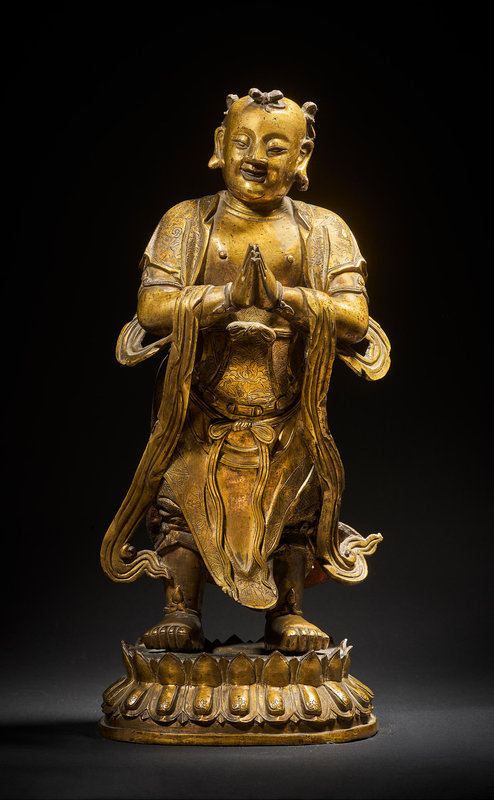

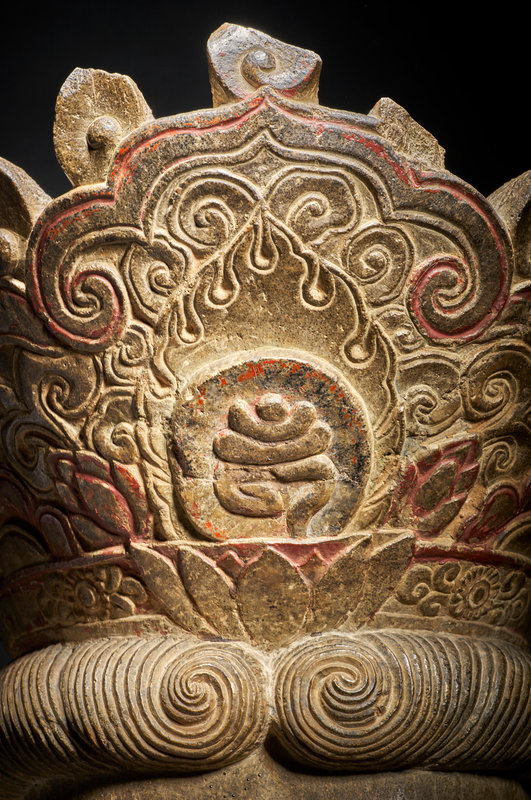

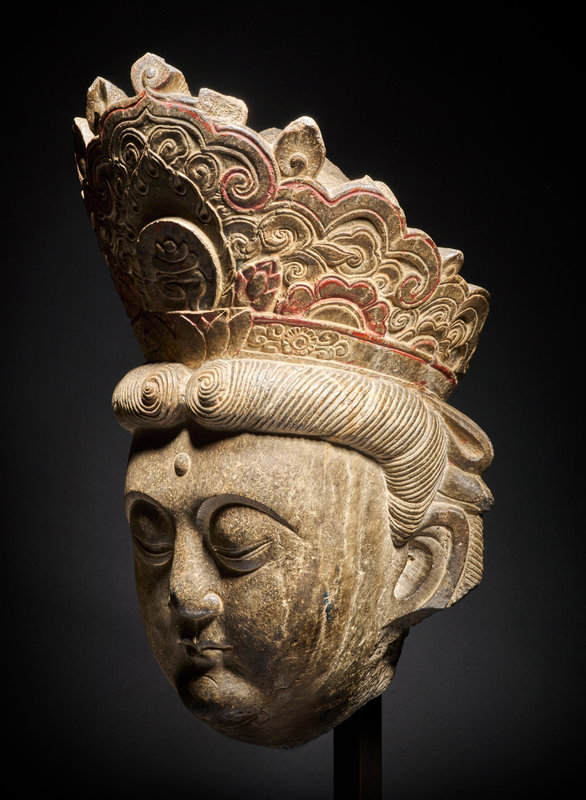
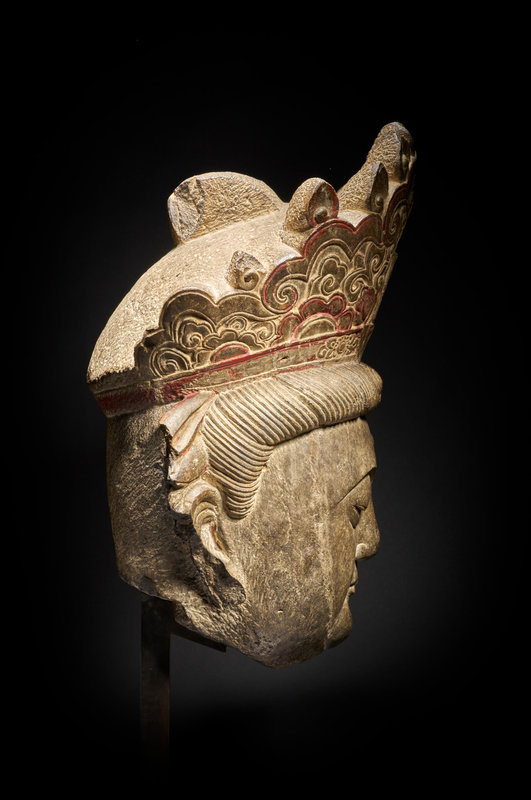
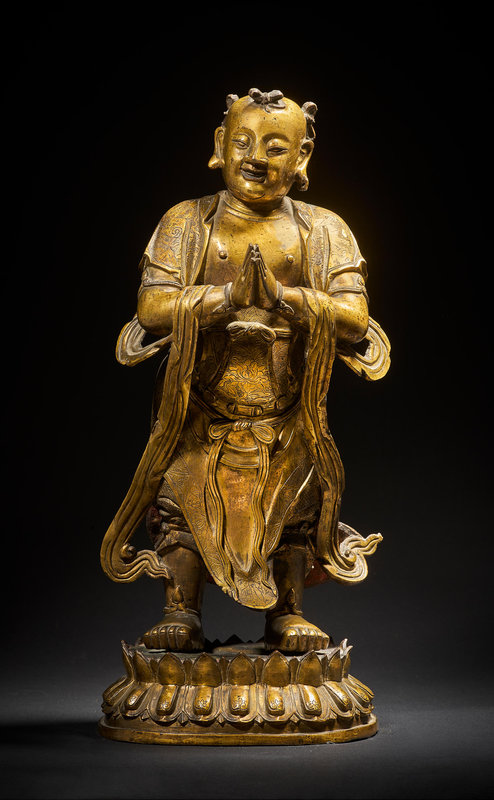
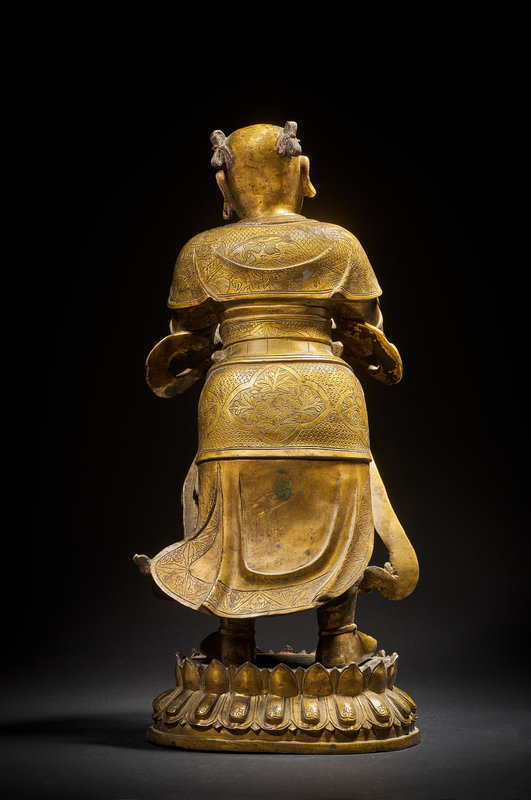

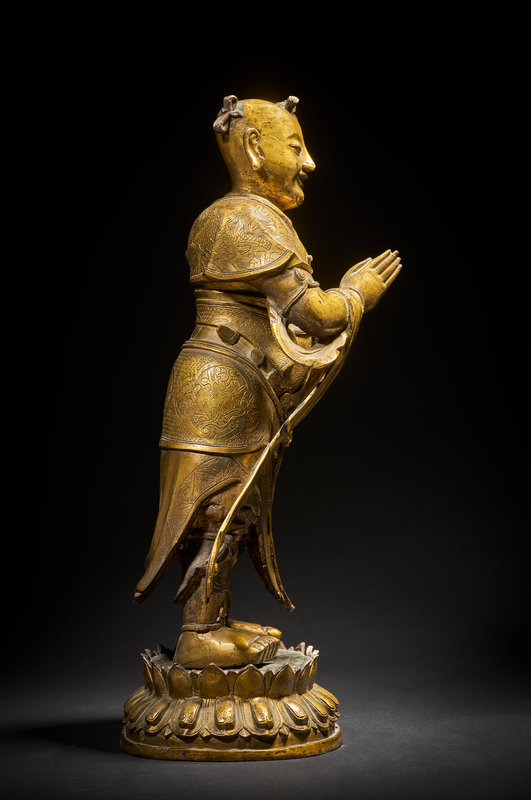





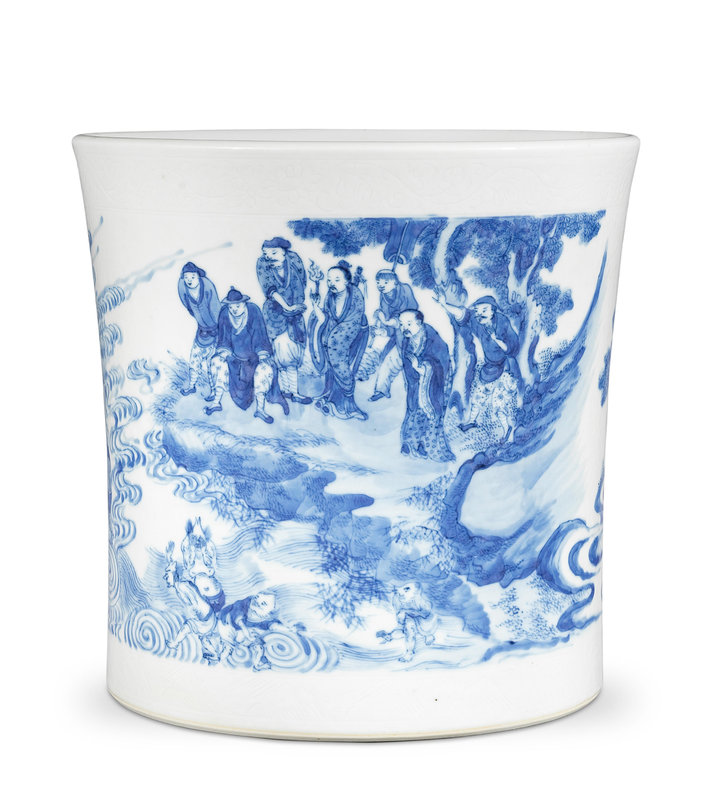



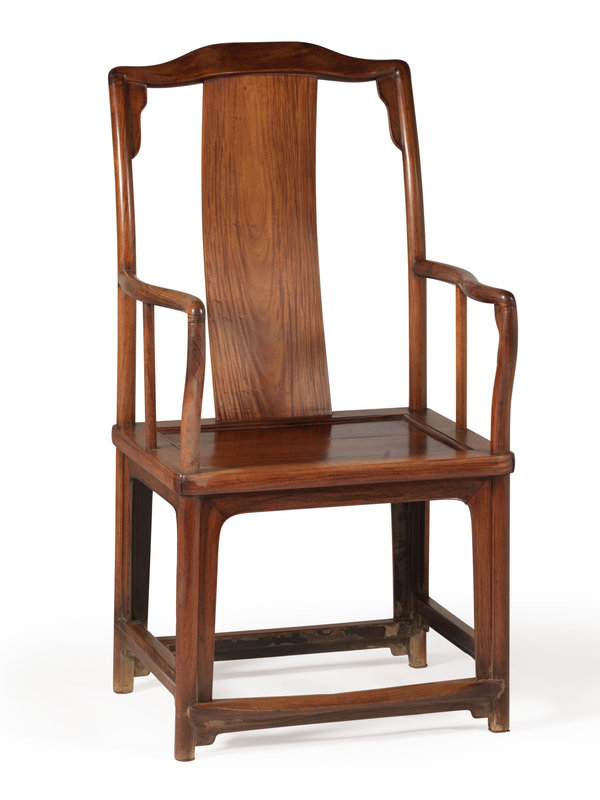
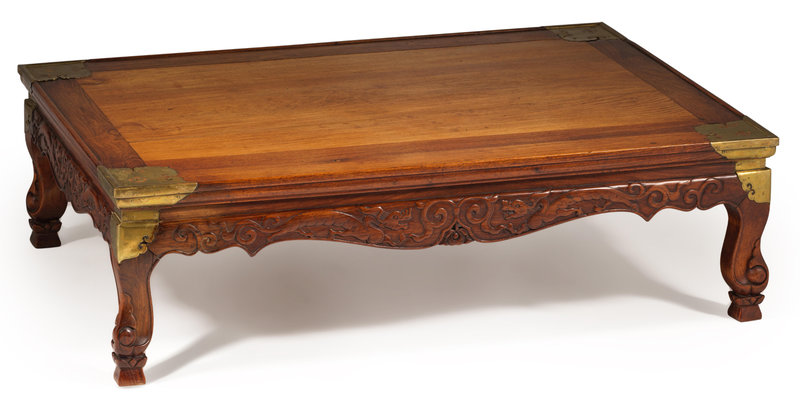
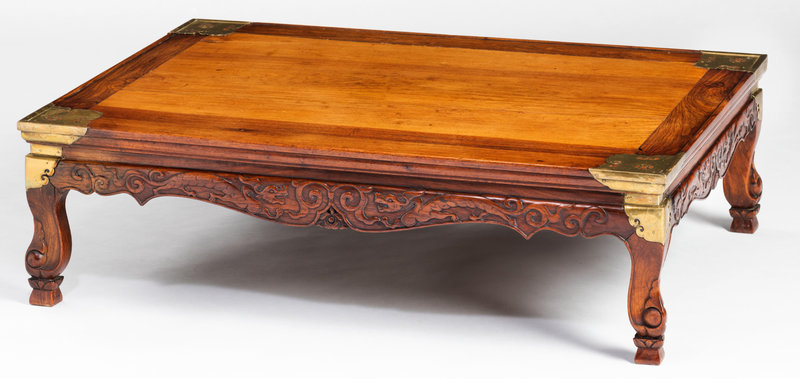
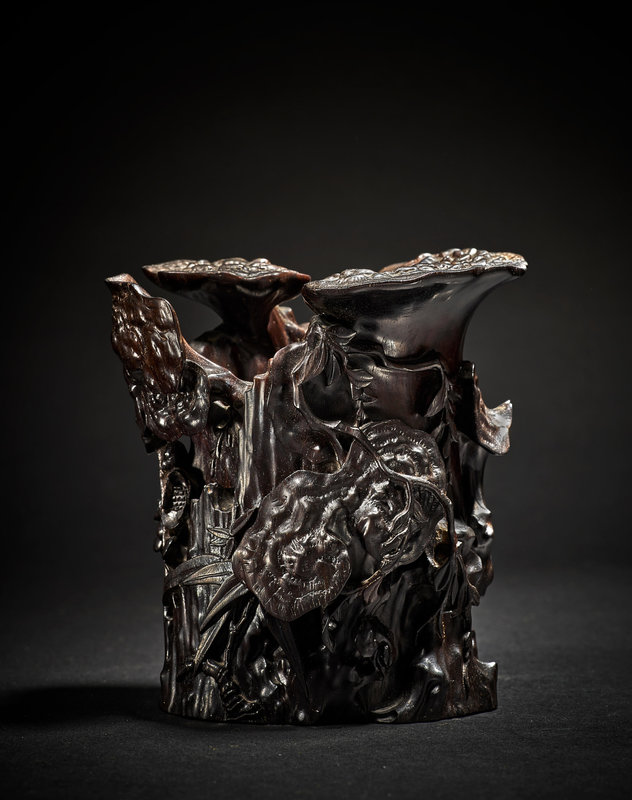


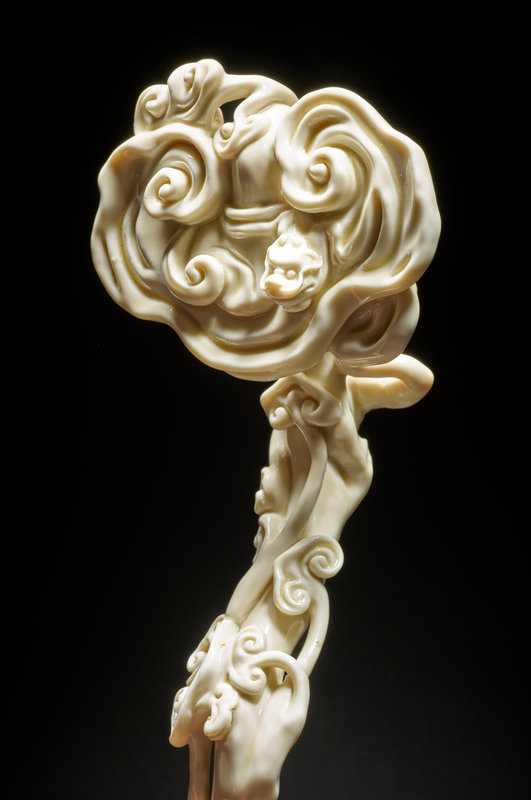
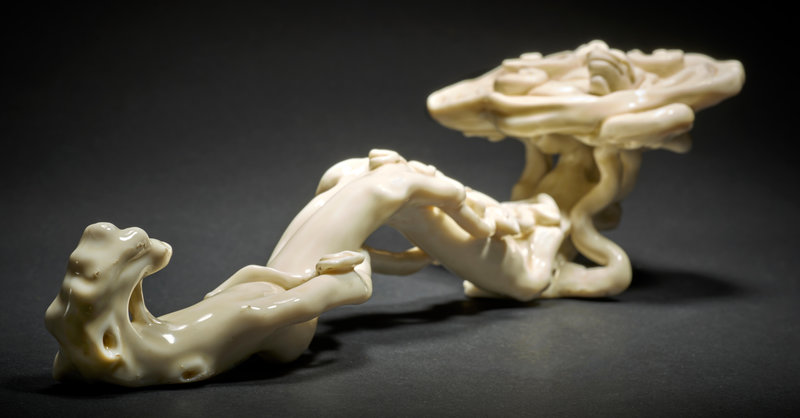


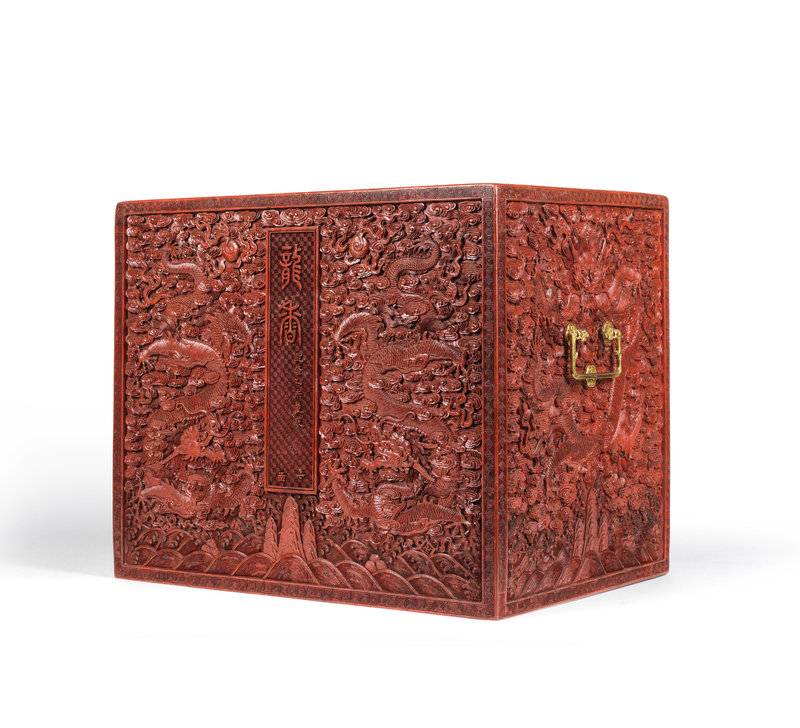
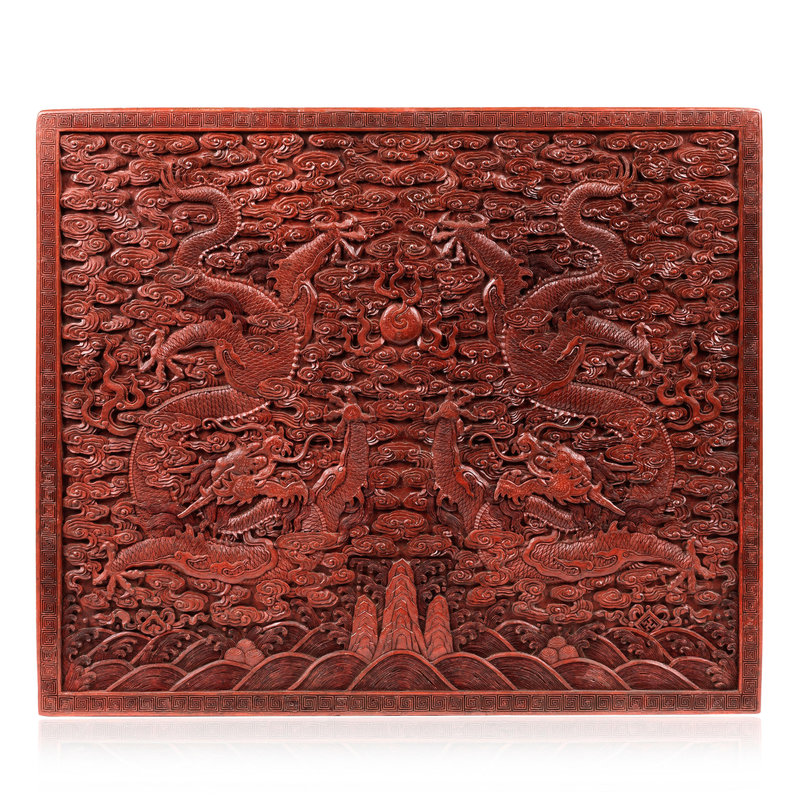
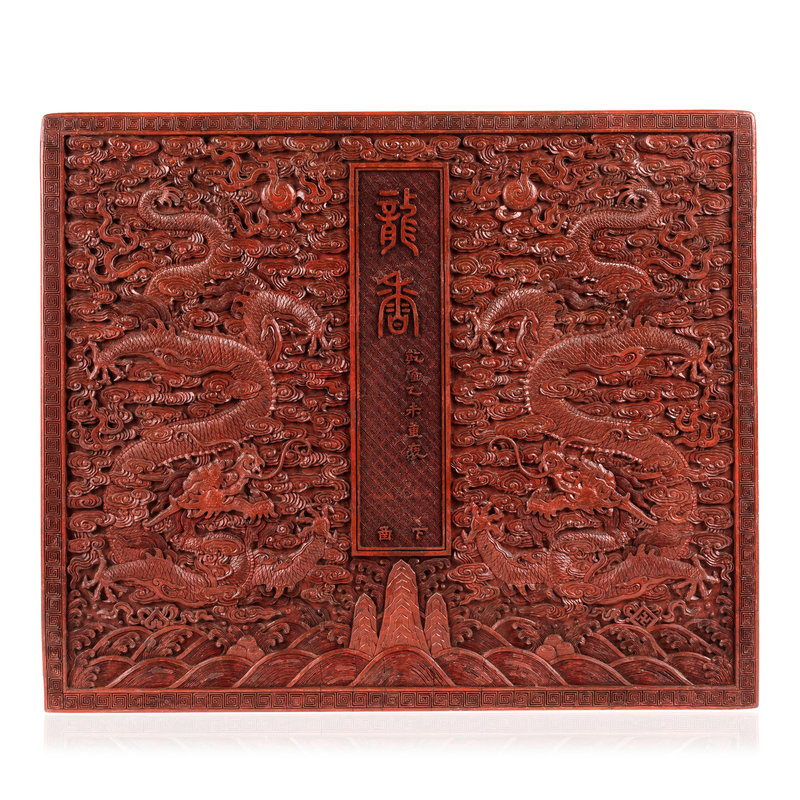
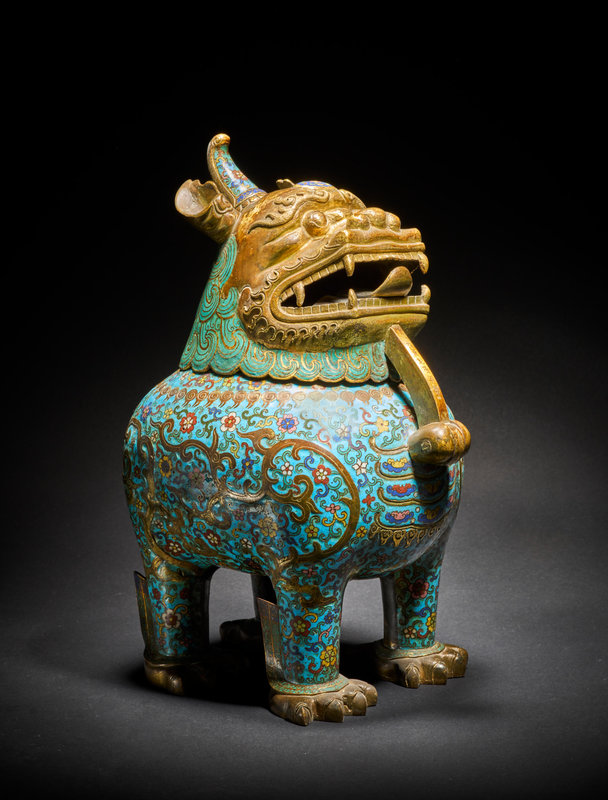
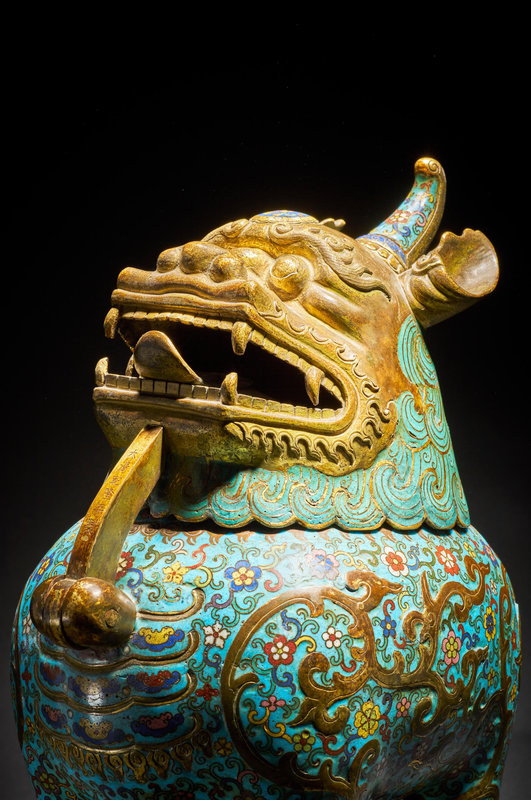
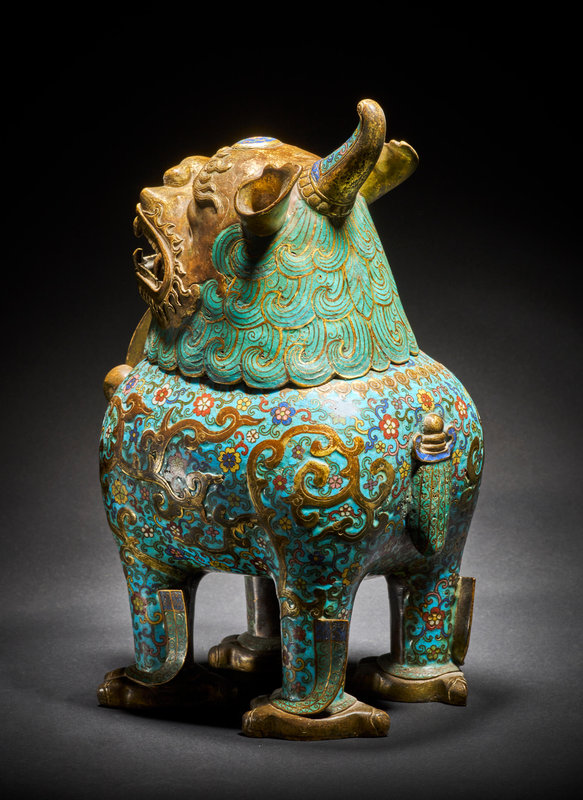






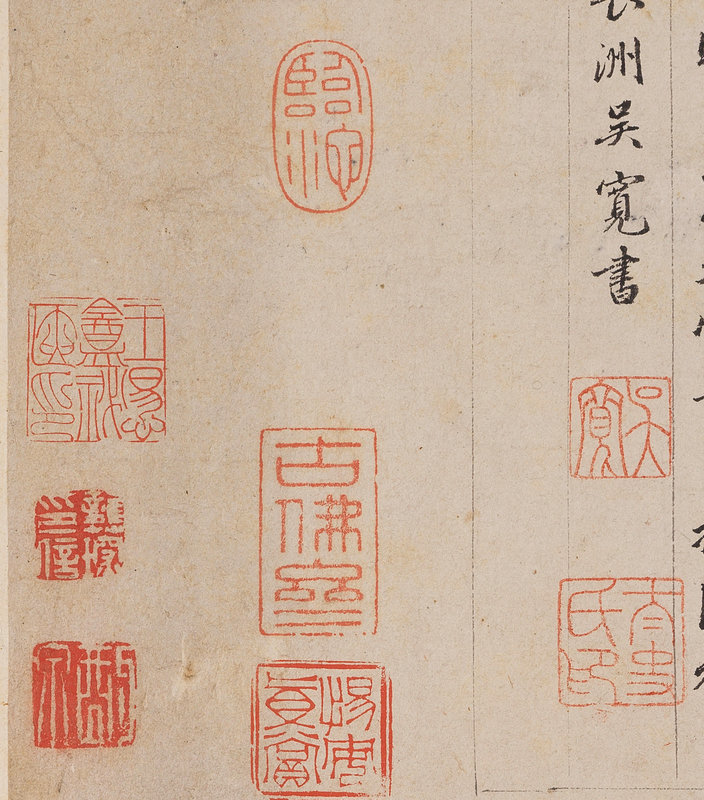

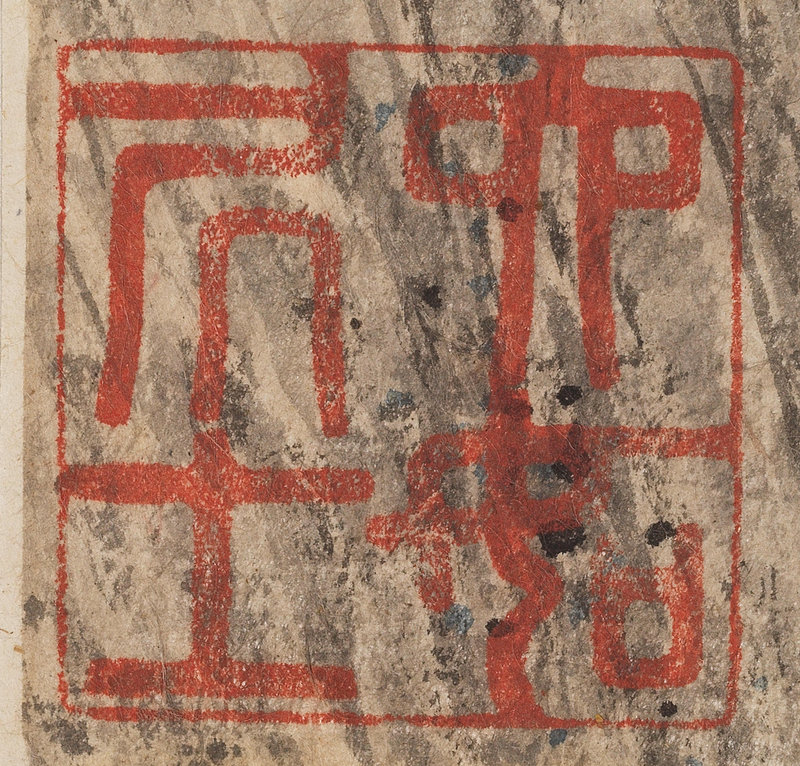

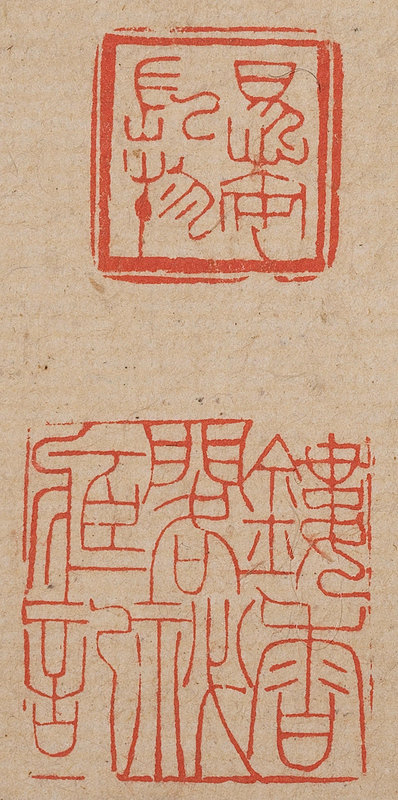
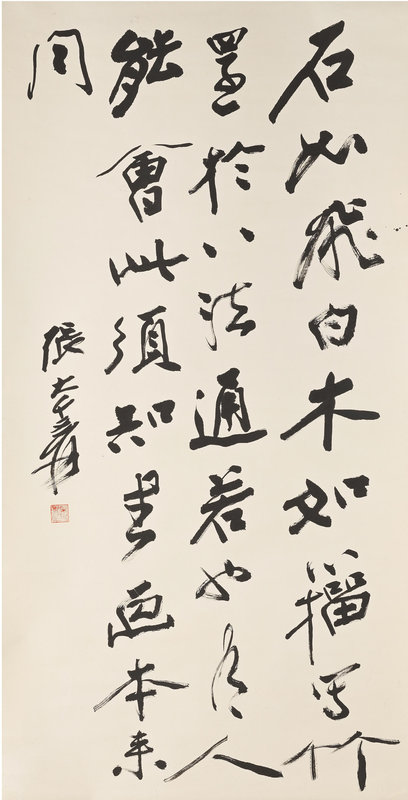
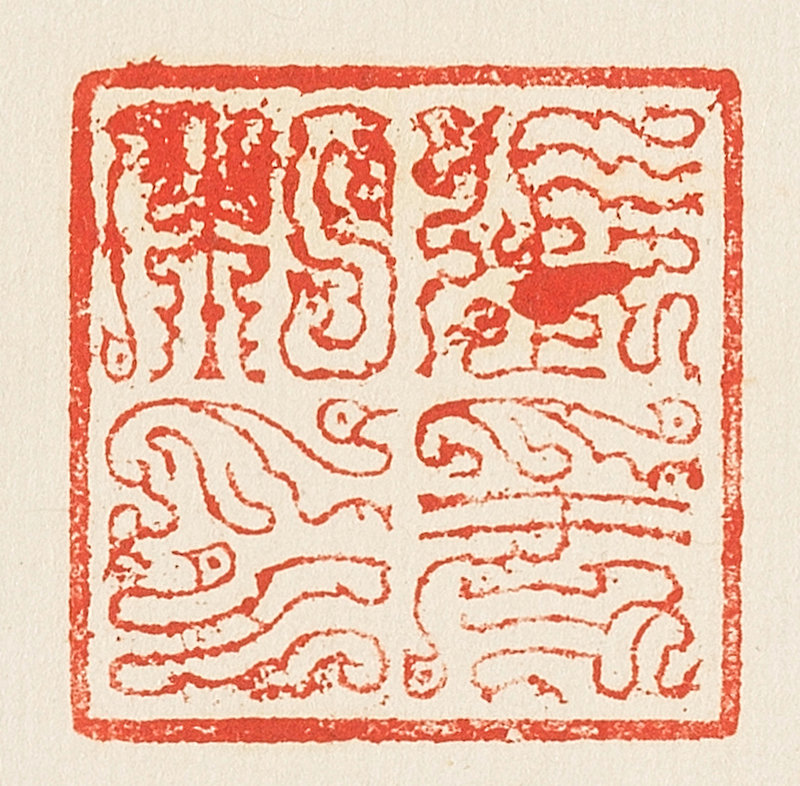

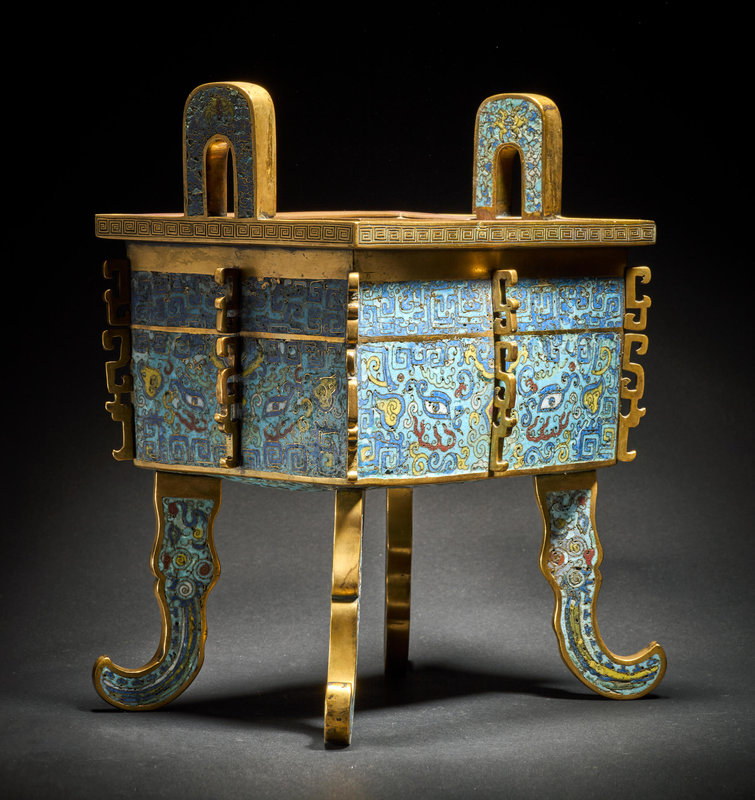
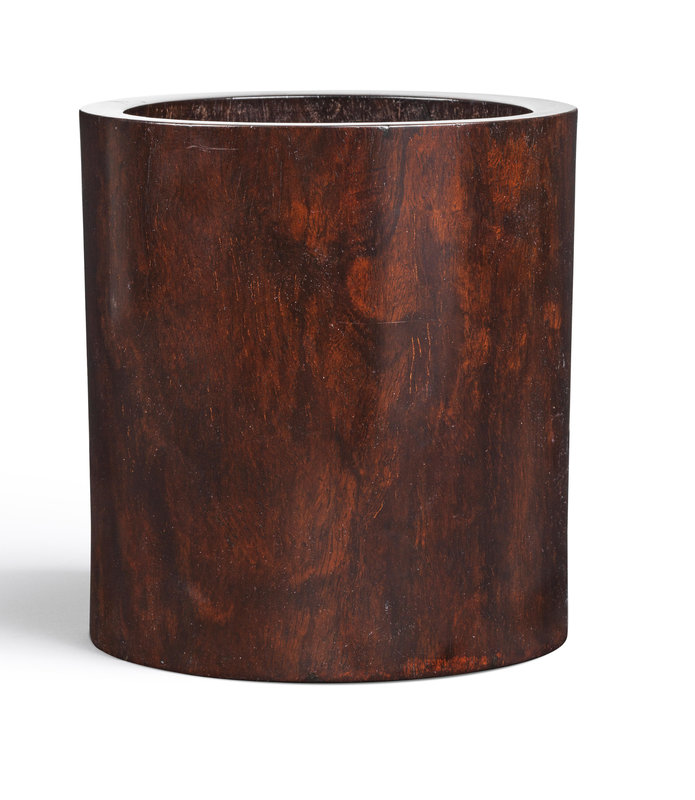



/image%2F1371349%2F20240416%2Fob_2a8420_437713933-1652609748842371-16764302136.jpg)
/image%2F1371349%2F20240414%2Fob_83ee65_2024-nyr-22642-0954-000-a-blue-and-whi.jpg)
/image%2F1371349%2F20240414%2Fob_15808c_2024-nyr-22642-0953-000-a-blue-and-whi.jpg)
/image%2F1371349%2F20240414%2Fob_e54295_2024-nyr-22642-0952-000-a-rare-blue-an.jpg)